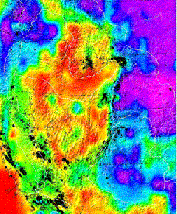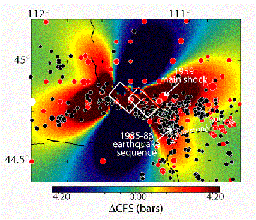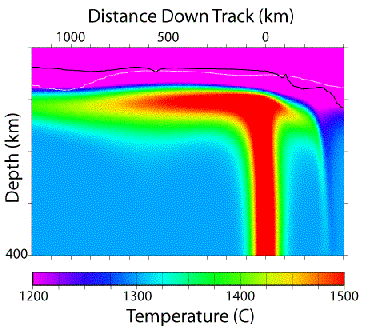





|
Three-Geology Student High (5.7 m) Fault Scarp Accompanying The M7.5 1959 Hebgen Lake Earthquake, West of the Yellowstone Caldera |
 Earthquake Correlation with Effective Elastic Thickness |
||
 Stress Changes Associated with the Hebgen Lake Earthquake |
 Yellowstone Hotspot Temperature Model |
Computer applications and practical problems in geophysics and tectonophysics will be emphasized. Students should have a command of UNIX/Linux for use of Matlab or Maple on the SUN workstations or have access to Matlab on a PC or Mac.
Reading Assignments
Reading in professional papers with written abstracts and
classroom presentations will be assigned.
| Two, 1-hour exams | 30% |
| Homework and computer problems | 30% |
| Term project | 20% |
| Final | 20% |
| total | 100% |